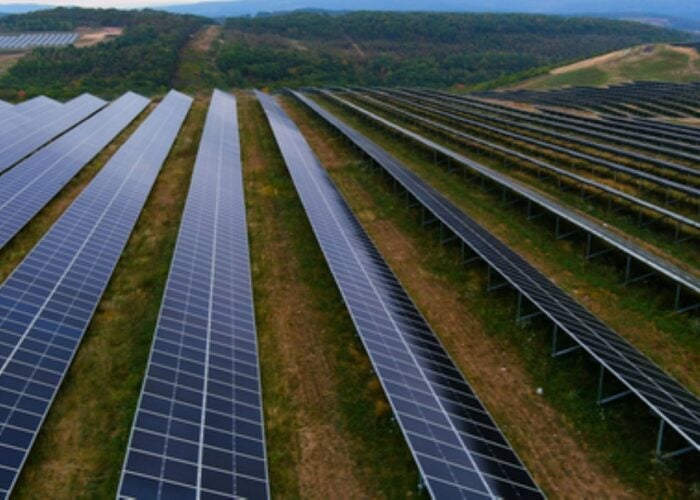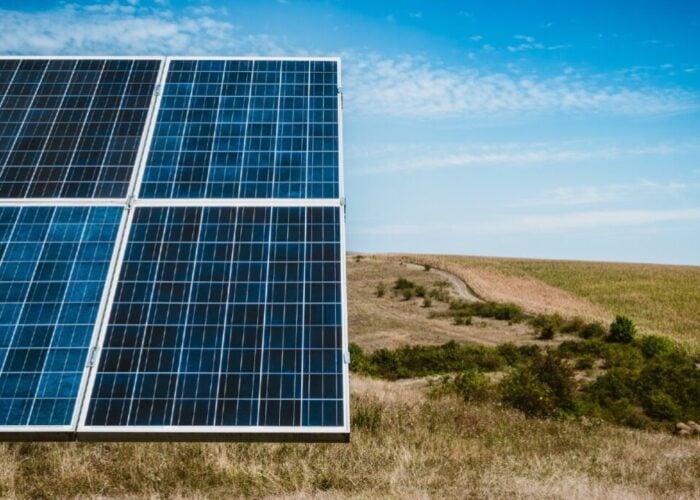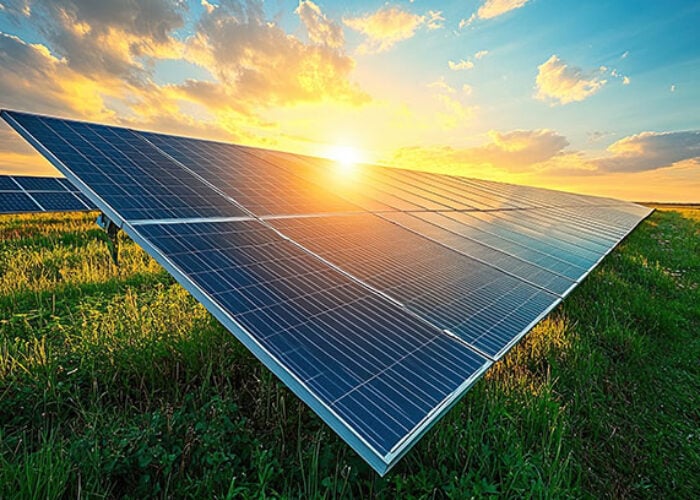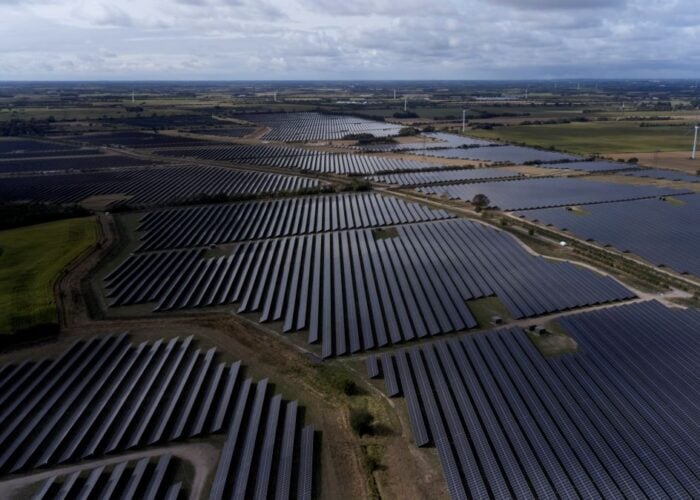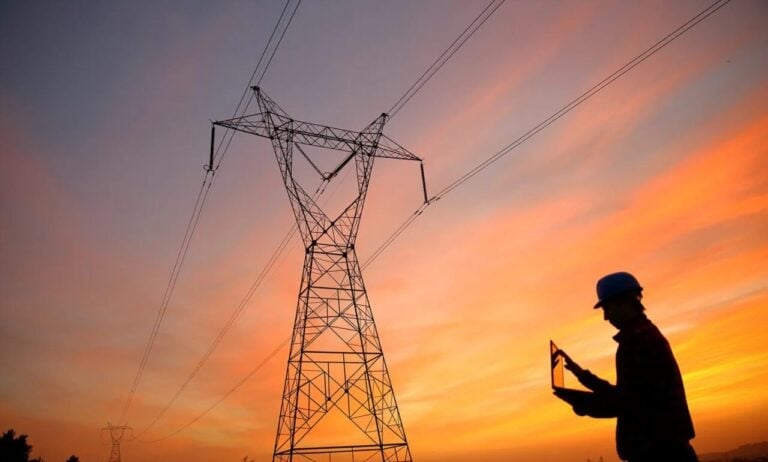
The Australian Energy Market Operator (AEMO) has revealed that several utility-scale solar PV power plants experienced curtailment of above 25% in the National Electricity Market (NEM) in 2024.
Curtailment for solar generation averaged 4.5%, according to the organisation’s 2025 Enhanced Locational Information (ELI) report. The report aims to highlight opportunities for investment and policy mechanisms in Australia’s renewable energy sector.
Try Premium for just $1
- Full premium access for the first month at only $1
- Converts to an annual rate after 30 days unless cancelled
- Cancel anytime during the trial period
Premium Benefits
- Expert industry analysis and interviews
- Digital access to PV Tech Power journal
- Exclusive event discounts
Or get the full Premium subscription right away
Or continue reading this article for free
In contrast to solar, grid-scale wind power plants in the NEM saw an average of 1.1% network curtailment, with some units seeing a high of 4.8%, significantly less than that of solar PV.
Over half of all grid-scale wind and solar generation in Australia experienced network-driven curtailment of less than 1% in 2024.
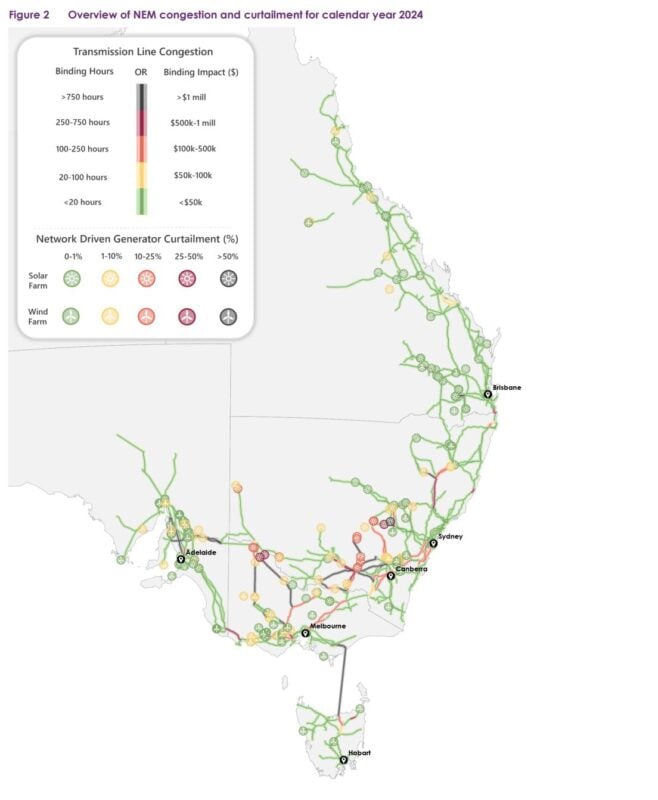
AEMO’s analysis centres on network hosting capacity, which measures the ability of the existing grid infrastructure to integrate new renewable energy projects without excessive curtailment.
The findings reveal that network hosting capacity is generally higher near load centres. At the same time, areas in south-western New South Wales and north-western Victoria face reduced capacity due to congestion.
The report notes that adding 2-hour duration hybrid battery energy storage systems (BESS) or standalone storage systems could improve hosting capacity in most locations, underscoring the value of energy storage in alleviating grid bottlenecks.
Future curtailment for 300MW renewable energy projects in the NEM
The report also projects future curtailment for hypothetical 300MW renewable energy projects across the NEM under near-term (2026-2028) and medium-term (2030-2035) scenarios.
In the near term, curtailment is expected to be particularly high in South Australia and Victoria, regions that are further along in their renewable energy transition. South Australia, in particular, has become one of the global leaders in the energy transition, with its grid already sourcing around 75% of its electricity from renewable energy.
Solar projects, in particular, face higher curtailment than wind projects, as they compete with consumer energy resources (CER) and other solar installations for access to daytime demand.
However, the medium-term outlook is more optimistic, with actionable Integrated System Plan (ISP) projects and investments in system security services expected to relax constraints and improve dispatch capabilities.
Hybrid projects have been deemed an opportunity for potential investors. By deploying hybrid systems that combine solar generation with storage, developers can capture excess energy during peak production hours and dispatch it during periods of high demand or network congestion.
AEMO’s executive general manager of system design, Merryn York, said building a reliable and efficient electricity system depends on investing in the right places.
“Opportunities exist in all NEM regions for renewable energy and firming projects to deliver energy, capacity, and network support services,” York said.
“This report presents key locational data to help investors understand where their projects are most likely to succeed, and where challenges, such as network congestion, curtailment, or energy losses, may arise. Not all locations are equal, and geographic network conditions must be a critical part of investment decisions.”
Our publisher, Solar Media, will host the Battery Asset Management Summit Australia 2025 on 26-27 August in Sydney. You can get 20% off your ticket using the code ESN20 at checkout


